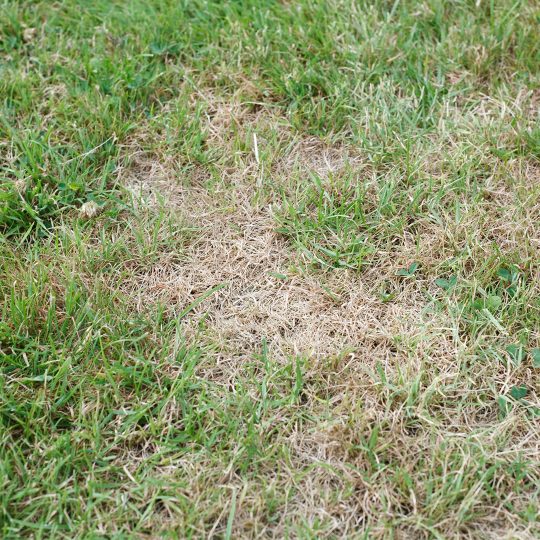8 Reasons for Grassy Brown Patches in Your Lawn
What’s Common, What’s Dead & What to Do
Posted
April 24, 2025

During spring, lawns are supposed to wake from winter dormancy and transition to a lush, green carpet. However, some grassy brown patches may remain while the rest of the yard is thriving. Discover why this could be happening to your grass and what to do about it.
Common Lawn Discoloration
Brown spots in your lawn are not always a sign of trouble. There are several common reasons why grass turns brown and should recover:
- Dormant. Cool-season grasses bounce back faster than warm-season grasses in the spring. As soon as the weather starts to warm, cool-season grasses start adjusting to the change in temperature. The transition is slower for warm-season, which may not green up until late spring or early summer.
- Drought. A dry fall and winter can dehydrate grass, turning it brown until sufficient rain fall brings it back to life.
- Soil. A lack of nutrients or unbalanced acidity can discolor grass. Test the soil to see what it’s lacking and fertilize accordingly.
- Damage. If there wasn’t much snowfall over the winter, lawns didn’t have a protective layer of insulation from extreme temperatures and drying winds.
While grass should bounce back eventually once conditions warm and spring rain falls, you can still do your part with proper watering, mowing, and fertilization when necessary.
Dead Grassy Brown Patches
If your lawn doesn’t bounce back eventually, there’s more of a chance it’s dead. Here are some of the possible reasons you’ll need to reseed to fix these spots:
- Salt. If the dead patches of grass appear close to the road or walkways, it could be damaged by salt and chemical deicers used over the winter.
- Drainage. Too much water can lead to root rot and dead grass. Aerate to help break up compacted soil and improve drainage. Also consider different irrigation and draining options, including gravel paths, to help eliminate pooling in certain areas.
- Pests. Grubs and other insects also become more active in the spring. Many feed on grass roots and could potentially kill patches of grass.
- Disease. If it’s been a snowy winter, snow mold is one of the more common reasons you’ll see brown patches of grass in the spring.
Once the grass is dead, reseeding is one of the main options to reinvigorate your lawn. After removing the dead grass and patching the areas or overseeding, continue to properly water, mow, and feed the grass to promote strong growth. For help identifying lawn issues, determining what your grass needs, and maintaining its health, call the specialists at Cardinal Lawns for a consultation. From pest and disease control options to aeration and seeding services, we can help give your lawn a lush look this spring.

Download Your FREE Lawn Disease Guide
Even the most manicured landscapes are susceptible to lawn disease. Take some time to learn about identification and removal before one takes over your lawn. This handy guide teaches you how to spot common lawn diseases as well as how to properly treat them.